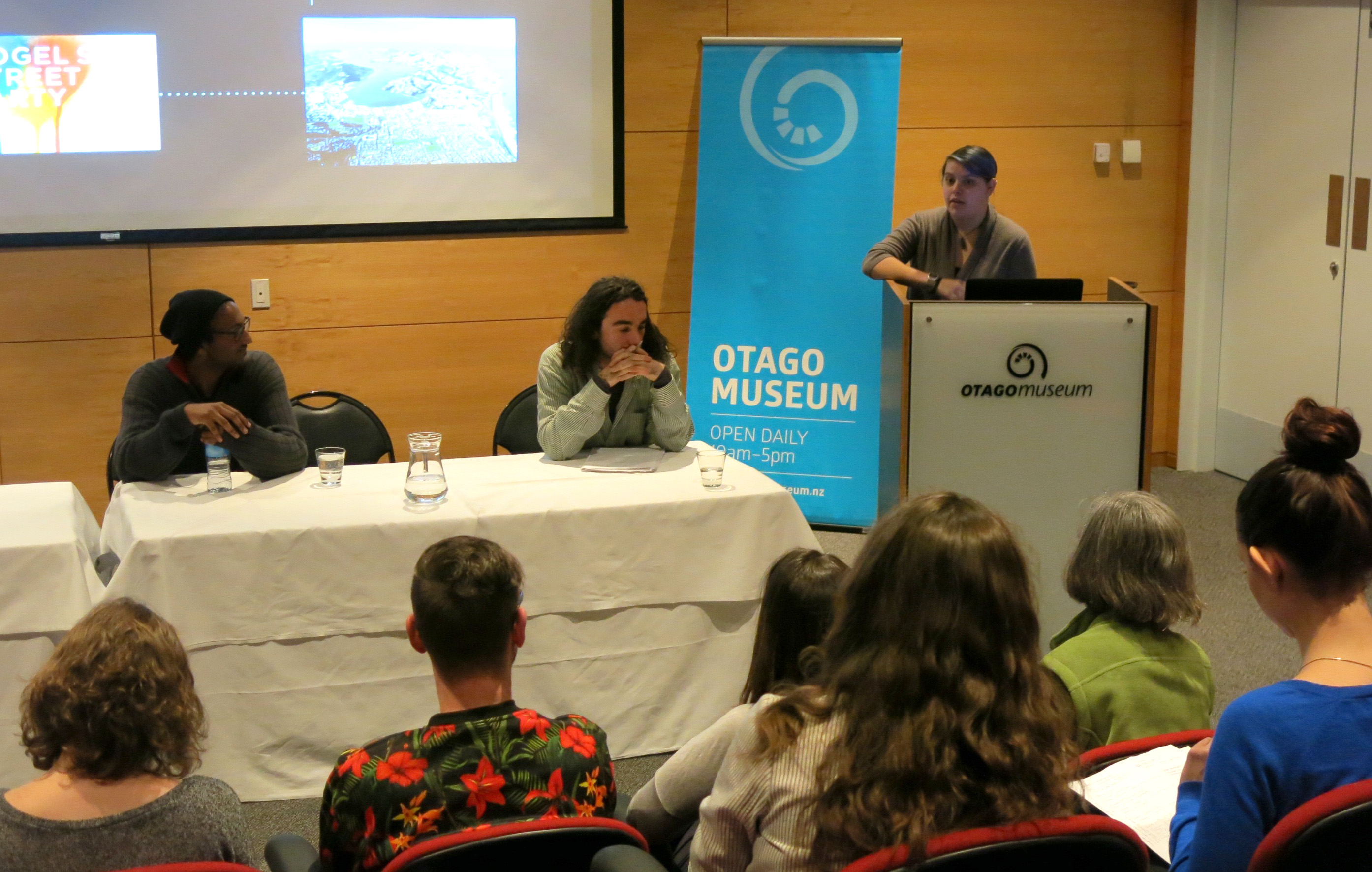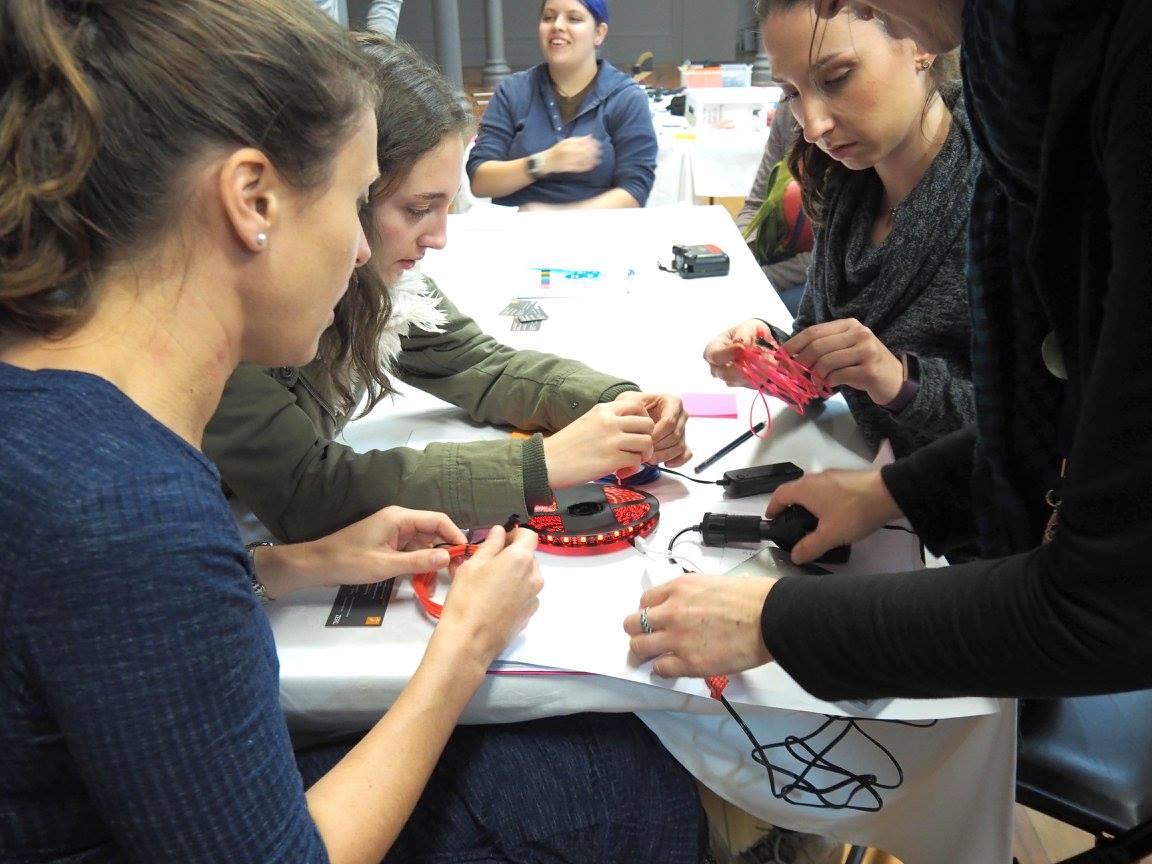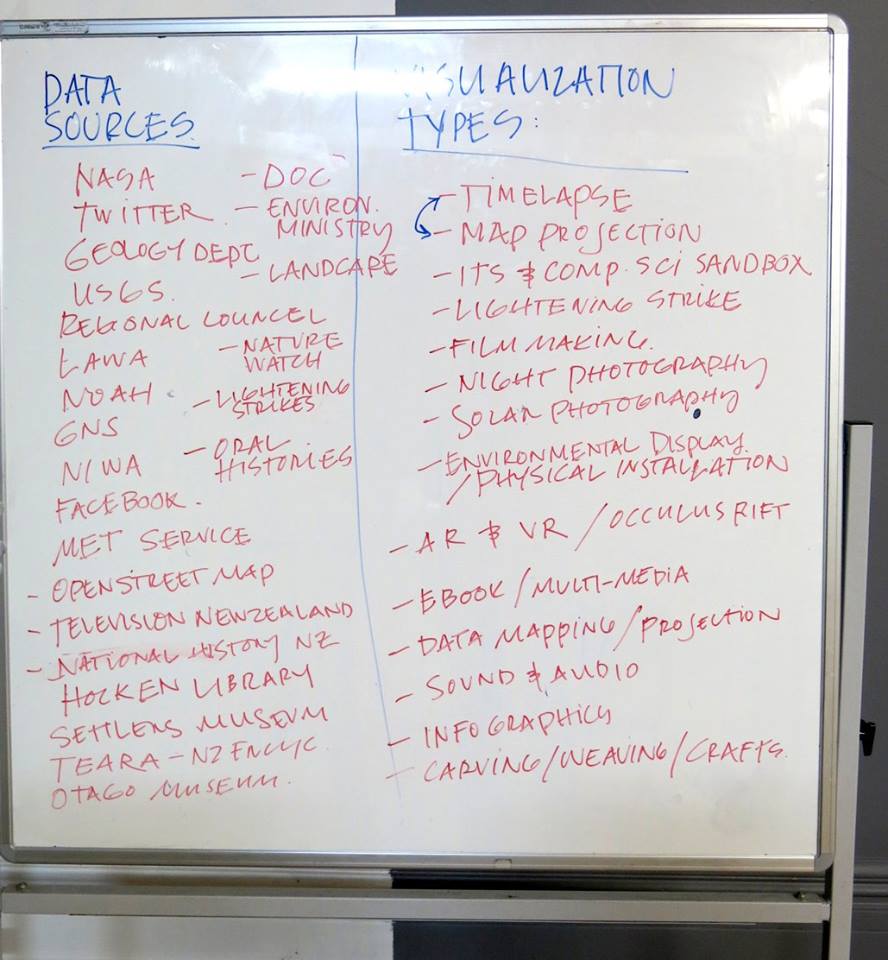Balloon mapping, using a tethered red weather balloon with a small time lapse camera attached, was a great way to meet curious walkers along the water’s edge. It was also an amazing way to explore and document areas along Dunedin’s coastline that are vulnerable to sea level rise. Thanks to the toolkit from Public Lab, helium from the Otago Museum, and an unusually sunny day, we documented 7 coastal locations.
The ZERO1 New Zealand Arts Incubator program was a rare opportunity to learn and explore climate change issues on the South Island of New Zealand with amazing community partners and participants. Many of the ecological challenges facing the South Island, such as sea level rise, rivers polluted by industry, drought, a warming ocean, ocean acidification, and endangered animals, are issues shared across the globe.
The local New Zealand incubator participant artists are working on prototype 2 of their projects to be featured at Dunedin’s Vogel Street Party and the Art and Futures conference at the Dunedin School of Art this October. We are looking forward to seeing these great projects evolve and create more community dialog about art, climate change and resiliency planning in New Zealand.
The Climate Kit exhibition is planning a show in collaboration with the California College of Art and the University of California at Davis in the future. We will be launching our global project submissions on the climatekit.org website soon.
The Climate Kit: Field Tools from the Anthropocene exhibition at the Otago Museum was a big success with a great turn out on opening night, despite the morning ice storm. Check out this interview we gave during the final hours of the installation process with 39 Dunedin TV.
The Living Map adds three-dimensionality to the projections often used in modeling the effects of climate change. Historical, present and future geological projections provide important data for the resiliency planning regarding coastal sea level inundation. The digital map layers are from Surging Seas, the Dunedin City Council, the Otago Regional Council, and the National Library. This project was led by Bridie Lonie from the Dunedin School of Art along with Sara Dean and Beth Ferguson from the ZERO1 New Zealand Arts Incubator with the help of Luke Easterbrook from the University of Otago, the Otago Museum, and Workspace and Andrew Early at Otago Polytechnic.
The Dunedin Youth Map was led by 7th grade teacher, Karen Parker, of the Tahuna Normal Intermediate School. She developed civic icons with her students and then created a community participatory map for the Otago Museum Climate Kit exhibition. The public was invited to interact using a combination of the icons, emoji, and eco icons from the Green Map System. Karen’s 7th grade class joined us for a day of balloon mapping to document their sports field, a site that is vulnerable to flooding due to saltwater inundation with sea levels rising on the coast of South Dunedin. The class plans to continue to develop the Dunedin Youth Map project this year.
Most people do not think about climate change on a geological scale. The Stones and Bones exhibit is meant to show visitors that the rocks and fossils beneath our feet tell a story. We can learn about paleoclimates and see how vastly different our surroundings used to be. The Stones and Bones project shows a rock core columns and a panel engaging geological history and human engagement with rocks and fossils, with particular emphasis around the Otago region.
This project relates to the Dark Skies Initiative proposed by the Dunedin City Council. They are considering the implementation of shielded LED street lighting to replace the current sodium models. While this is a council vote, the public is involved in the decision-making process. Therefore, our aim was to create an exhibit which will initiate interest in light pollution and solutions. We provided information on the different options the council are considering along with examples of lighting solutions currently being implemented across the globe. Elements of the exhibit include information panels on doors covering many different topics related to the Dark Skies Initiative, and a box containing alternate street light models and images of the night sky from Dunedin.
This past weekend marked the end of our workshops and the distribution of our community small grants. On Saturday, at the Otago Museum, we heard from community groups about local issues ranging from sea level rise, to erosion, to neighborhood resiliency, to light pollution, to geologic time scales of climate change.

Four project proposals were selected to receive small grants and be developed further in the next two weeks. All project concepts are relevant to climate issues facing Dunedin and the surrounding Otago region. All four of the projects have larger communities and experts that they are drawing on for resources, ideas, and longevity plans. We were impressed with their grasp of the short- and long-term plans for the project. We’re excited to see the projects take shape for the exhibition. The four projects are:
Bones and Stones: a “field guide” for New Zealand geology, including two enlarged “core samples” showing the geologic long-view of the environment.
Shedding Some Light: a project that examines the proposed lighting solutions for high-efficiency street lighting and “dark skies” proposals for the town to be able to enjoy the Aurora Australis by limiting light pollution.
Youth Community Map: focusing on climate change resiliency and vulnerable sites near the Tahuna School in South Dunedin.
Living Map: a data-enabled relief map of the Dunedin area for community conversation about the past, present, and future geography of this vulnerable coastal city.
The projects will be exhibited, along with the work we produced during our time in Dunedin, at the Otago Museum August 5-22.
This weekend we started a series of community workshops at Otago Museum. Yesterday we kicked things off by discussing and mapping the various climate resources and threats in the Dunedin area. We learned a lot from the community about the bay, its estuaries, and mining history as we located areas of preservation and vulnerability. Dunedin is a fascinating convergence of urban and natural forces, in a picturesque setting. It was exciting for us to learn more about the historical context of a city that has taken shape over the last 200 years.

We will continue to conduct public workshops over the next six days with community members, university students, and museum guests that will look at the city through various climate lenses, including environmental sensing, aerial photography, coastal mapping, and iconography.

Meanwhile, we are learning so much about the local animal life and natural setting from the staff of the museum. We were given a tour of their collection of New Zealand land birds, including the extinct Moa, during which they explained the changing understanding of the bird’s stature over the last hundred years, from that of an upright ostrich to that of a kiwi with a low stance. Discussing science as an evolving understanding of the past is helpful for us as we think about how to work in the changing environmental conditions of the present.
To learn more, we recommend checking out the New Zealand Ministry of Environment’s Climate Change Projections for the Otago Region.
We are headed to New Zealand and have a huge week of events ahead of us in the wonderful South Island city of Dunedin. We are joining the Dunedin community in the midst of the country’s annual science festival (SciFest), in which we will be participating through two presentations and our ZERO1 American Arts Incubator workshop series. The festival this year is appropriately focused on Climate Change and Women in Technology. It’ll be a great way for us to learn about the local community's interests and concerns in climate science. We are looking forward to an educational and fun week as we hit the ground for our month-long cultural exchange.
Wednesday, July 13th we will be presenting an introduction to our work at a PechaKucha-style event, “What Inspires Me: Women in Science”. And Thursday we are giving a public artist talk “Tools and Fieldwork in the face of Climate Change." These two presentations, along with our access to other talks and events through SciFest, will be invaluable tools for us as we head into our community workshop this weekend.
Alongside the SciFest, we are also busy this week setting up our studio space in Gallery 1877 in Otago Museum, where we will be conducting our workshops and working this month in preparation for our Climate Kit exhibit. The staff of the museum already have been invaluable in orienting us to the community and region. We are thrilled to settle-in there.
We are honored to be included in this festival, to learn from so many scientists and educators working on these topics, and to be hosted by such an amazing institution as the Otago Museum. And we can't wait to update you on how it's all developing in coming days!
We are excited to be kicking off our work with ZERO1. The American Arts Incubator is an opportunity to work with international artists, designers, and scientists on global and local climate change issues, digital tech, and forms of civic engagement. This involves a lot of interdependent parts, and we will be pulling apart this constellation of components through these posts. The starting point for us is the City of Dunedin on the South Island of New Zealand. Our residency in Dunedin will coincide with The New Zealand International Science Festival in July, creating an amazing springboard for this cultural incubator.
Dunedin is the southernmost city of New Zealand, putting it in direct proximity to the Antarctic Ocean, the west coast Glaciers in the Southern Alps and the 600km Alpine Fault line that has produced four earthquakes around magnitude 8 in the past 900 years.
New Zealand is under an increasing number of climate stresses. New media and research methods, such as crowd-sourced content, real-time climate sensors, and community mapping allow designers and artists to engage scientific and environmental scales of work. Dunedin has active science and climate research communities, including interesting work developing at University of Otago, Otago Museum, and the Otago Climate Change Network. We look forward to learning from these institutions and developing an understanding of their on-the-ground perspective of Dunedin as a cultural and climatic intersection.
Artist Core Project Overview
Climate change and natural stresses are impacting every aspect of life. Designers are in a unique position to identify and amplify new scenarios and potentials that engage the public about this changing world. Drawing from scientific and artistic field-research practices, we will develop ways of seeing the changing landscape in the Anthropocene. This will develop as ‘field kits’ and ‘field guides’, as a way of bringing this work back out into the environment in various ways.
We will develop a further understanding of the scope of this project during the pre-trip, so that it can respond to local knowledge and priorities. However, we anticipate the project to be have a crowd-sourced component, collecting tools and methods of research from climate practices, both scientific and artistic. We will collect (through our core project and connected community projects) weather and air quality data through sensor technology, and anecdotes related to the changing relationship of climate in daily life. These will be developed into physical artifacts and/or video installations for the final Exhibition.
As time and energy are in short supply, having a couple days of focus is a gift. We have spent this last week in January at Impact HUB San Francisco building a plan for our workshop and exhibition. We met with the program team and many tech and art experts from the Bay Area to flesh out our concepts and plans for ground work. After developing this concept over time in relative isolation, it has been great to connect our ideas to a larger community.
We also had a chance to meet and collaborate with the other AAI artists. The artists are a fantastic, experimental bunch. It is a humbling group to be a part of, and this week has provided a framework for us to more directly share resources and ideas with each other.
The response to the Emerji has been very positive. We have developed methods of breaking down the larger project into more immediate pieces, and at the same time we have made connections to push it forward well after the initial phase of work overseas. We have had discussions throughout the week around the role of social media as a civic and social tool - and ways of conveying ‘emergency’ within the local social structures. It is unusual and satisfying to find a group so willing to talk about both community engagement and new media as part of art practice.